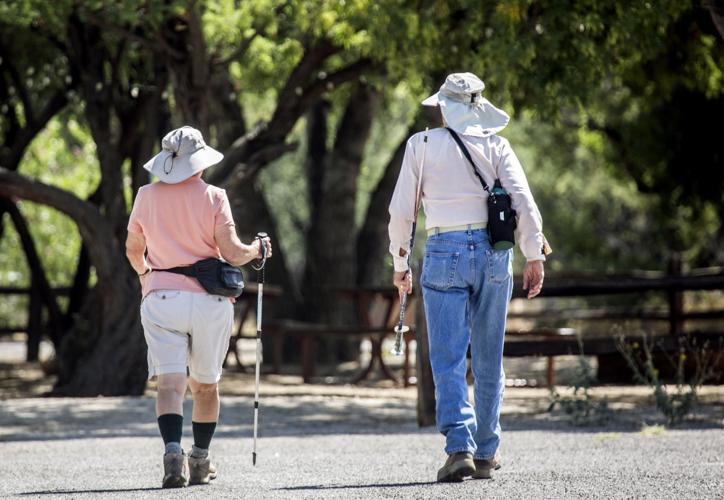When you go for your morning jog along the Rillito River on these muggy summer mornings, you will have the added benefit of knowing that you are exercising not only your body but also your brain.
“We’ve known for a couple of decades that exercise can improve brain health,” said David Raichlen, associate professor at the UA School of Anthropology. “But we don’t really understand why.”
To answer that question, two University of Arizona researchers, including Raichlen, recently combed through the literature and developed a model that might explain why the physical and mental are so closely connected.
Solving this problem can allow researchers to understand the body-brain connection better and develop exercises specific to the needs of individuals’ bodies, ultimately preventing and managing disorders or diseases that emerge later in life.
Emerging clarity
Millions of years ago, human ancestors called hominins lived a more sedentary lifestyle in the forests of Africa, plucking nearby fruits when hungry and walking only 1 to 2 kilometers a day.
But about 2 million years ago, the climate shifted and swaths of lush forest became open, dry savannah.
Hominins adapted to the new conditions and transitioned to a hunter-gatherer lifestyle, covering 10 to 15 kilometers of ground a day to forage for food.
The change was not only physical. Hunter-gatherers not only had to move more, but they had to think more creatively, multitask and problem-solve to safely navigate the land and successfully find food.
The simultaneous need to be both physically and mentally agile arose, and within this context, our bodies evolved.
Jog your memory
On your jog, you work out your heart, pump oxygen through your blood and organs and build endurance.
But your brain also coordinates your arms and legs, observes your surroundings, navigates the path, reacts to obstacles and even wanders, focusing on solving problems or what to do after the run.
You engage your body and brain much like hominins did millions of years ago.
“What (the model) suggests is that we are built to be cognitively engaged endurance athletes,” said Gene Alexander, professor of psychology and psychiatry who developed the model with Raich-len.
But if humans do not engage in those ways, then just like the body, the brain can atrophy.
If you don’t exercise, the brain “prunes those neurons that are energetically expensive to maintain.” Raichlen said. “You don’t want to give your brain the signal that it doesn’t need to maintain those links.”
Many past studies have found, for example, that sedentary people show less connectivity and function in the brain, and that exercise might protect against memory loss.
Just the starting line
This model is a tool in many ways.
“If those systems are linked through an evolutionary mechanism,” like the model suggests, Raichlen said, “then we might be able to use that evolutionary mechanism to actually improve people’s response to exercise.”
For example, some people benefit more from exercise than others, but the reasons why still aren’t understood.
But if the model is correct, it can be assumed that it’s because any evolutionary change comes with variation within the species, Raichlen said.
In a more general sense, “This (model) provides a framework that allows us to generate a number of questions that have to be answered,” Alexander said, leading to future research.







